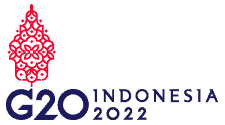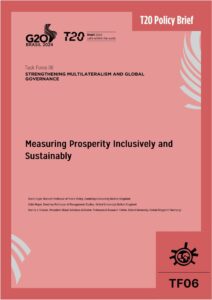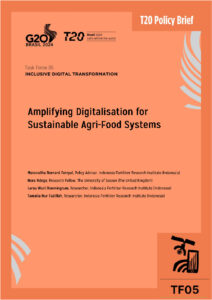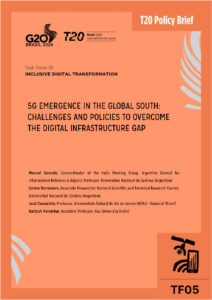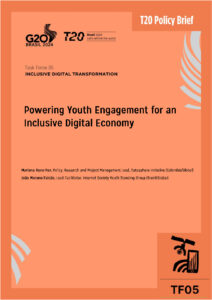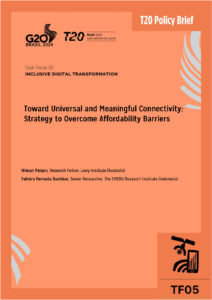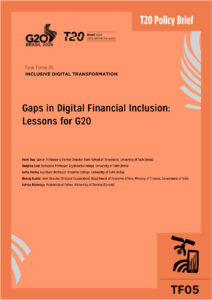Against the backdrop of a looming debt crisis in the Global South, we propose that the Group of 20 (G20) develop a Debt Relief for Green and Inclusive Recovery Initiative as an ambitious, concerted and comprehensive debt-relief initiative that frees up resources to support recovery in a sustainable way, boosts economic resilience and fosters a just transition to a low-carbon economy. To this end, we propose a Guarantee Facility for Green and Inclusive Recovery managed by the World Bank that would provide Brady-type credit enhancements for new sustainability-linked bonds that would be swapped with a significant haircut for old debt.
Challenge
The COVID-19 pandemic has caused a surge in debt levels in emerging market and developing countries and significantly worsened already existing debt-sustainability problems. Many emerging markets and developing countries are facing grave difficulties in obtaining the fiscal space to adequately respond to the COVID-19 pandemic and mount a green and inclusive recovery.
According to the World Bank, developing country debt has risen sharply to a 50-year high, at roughly 250 percent of government revenues (Malpass, 2022). Debt vulnerabilities are particularly severe in low-income countries, where around 60 percent are already experiencing or at high risk of debt distress (IMF, 2022a). A quarter of developing country governments that have issued hard currency debt already have liabilities trading at distressed levels (IMF, 2022b). The composition of financing is continuing to evolve towards new, more expensive sources (IMF, 2022c). What is more, monetary tightening in the United States and other advanced economies will further drive up the cost of debt and make international refinancing ever harder for those countries that still maintain access to Eurobond markets.
The Russian invasion of Ukraine has further escalated the situation, creating a perfect storm. The war has sent shockwaves through the global economy and caused the largest commodity shock since the 1970s (IMF, 2022b; World Bank, 2022a). Whereas oil, gas and grain exporters may get temporary relief in the short term, many developing and emerging market countries – including in Sub-Saharan Africa – are net fossil fuel and grain importers. The effects of the war in Ukraine are likely to significantly worsen the social and economic situation in many developing and emerging market countries, further undermining debt sustainability.
Over the last two years, high levels of public debt service and insufficient fiscal and monetary space have constrained the crisis responses of most low and middle-income economies. While advanced countries were able to implement extremely expansionary fiscal and monetary policies in response to the pandemic crisis, few countries in the Global South had this option. In many low- and middle-income economies, external public debt service is greater than healthcare expenditure and education expenditure combined (Munevar, 2021).
The precarious debt situation is not only threating recovery. It is also impeding much-needed investments in climate resilience. These investments are urgent: Governments must climate-proof their economies and public finances or potentially face an ever-worsening spiral of climate vulnerability and unsustainable debt burdens (Buhr et al., 2018; Volz et al., 2020). There is a danger that vulnerable developing countries will enter a vicious circle in which greater climate vulnerability raises the cost of debt and diminishes the fiscal space for investment in climate resilience (Beirne et al., 2021). As financial markets increasingly price climate risks, and global warming accelerates, the already high risk premia of these countries are likely to increase further. The impact of COVID-19 on public finances risks reinforcing this vicious circle. In many countries, including many small island developing states, high public debt service is crowding out critical investment that is needed for climate-proofing economies and enabling a green, resilient and equitable recovery.
Proposal
Since the start of the pandemic, financial support provided by the International Monetary Fund (IMF) and multilateral development banks has provided a lifeline to many governments in the Global South. However, large portions of these public transfers have been used by debtor governments to pay debt service to external private creditors. The net debt transfer from many developing country governments to external creditors (Munevar, 2021) stands in stark contrast to the urgent need of these countries to ramp up investment in crucial development areas at home.
The measures taken by the international community to date have not sufficiently addressed the worsening debt sustainability problem. The Group of 20’s (G20) Debt Service Suspension Initiative (DSSI), which ended in December 2021, provided a mere US$13 billion in temporary relief to 48 low-income countries through a suspension of debt-service payments owed to their official bilateral creditors (G20, 2022). Private creditors, who hold the biggest share of developing country debt, did not participate at all.
In November 2020, the G20 put forward a Common Framework for Debt Treatment beyond the DSSI for the same 73 countries eligible for DSSI treatment to address insolvency and protracted liquidity problems. Still, the Common Framework excludes middle-income countries and lacks a mechanism for meaningful private creditor involvement. To date, only three countries – Chad, Ethiopia and Zambia – have applied for debt treatment under the Common Framework. Each of these cases has experienced significant delays, discouraging other countries from seeking debt relief under this framework. The Bretton Woods institutions have acknowledged that the Common Framework in its current form does not work.
The global community needs to act rapidly and forcefully to fend off debt crises in emerging market and developing countries. Economic history has taught us that protracting a necessary debt restructuring will make the situation only worse for the borrower. World Bank president David Malpass rightly highlighted in the 2022 World Development Report that “[t]he absence of a predictable, orderly and rapid process for sovereign debt restructuring is costly, dampening recovery prospects and creating uncertainty” (World Bank, 2022b).
Against the backdrop of the exogenous COVID-19 shock, the enormous investment needs to meet development and climate goals, and the hesitancy of debtor governments to seek relief, a sovereign debt restructuring scheme is needed that will facilitate timely and orderly restructuring and provide a clear pathway for debtor governments to green and inclusive recoveries. A pragmatic approach is required that will deliver meaningful and timely debt relief to those countries that require it. Given that private creditors hold a majority of the public external debt of developing countries, private sector involvement is crucial. As pointed out by the World Bank “[t]he lack of measures to encourage private sector participation may limit the effectiveness of any negotiated agreement and raises the risk of a migration of private sector debt to official creditors” (World Bank, 2022c). Adequate incentives are needed to ensure that private creditors participate in debt restructuring where needed and bear a fair share of the burden.
We therefore propose a Debt Relief for Green and Inclusive Recovery Initiative as an ambitious, concerted, and comprehensive debt relief initiative – to be adopted on a global scale – that involves both private and public creditors and that frees up resources to support recovery in a sustainable way, boosts economic resilience and fosters a just transition to a low-carbon economy (Volz et al., 2020, 2021).
Under our proposal, comprehensive debt relief would be granted by public and private creditors to eligible heavily indebted countries with an unsustainable debt burden – analogous to, but improving upon, the Heavily Indebted Poor Countries (HIPC) Initiative model. These countries would receive debt relief on their private, bilateral and multilateral debt in order to provide the fiscal space for investment in health and social spending to fight the pandemic and in climate adaptation. The IMF should create an option for all sovereign debtors to request an updated debt sustainability analysis (DSA) as a basis for negotiations with their public and private creditors (Volz et al., 2022). Importantly, the DSAs conducted by the IMF need to be enhanced to include climate and other environmental risks and also critical spending needs to achieve the United Nations Sustainable Development Goals (SDGs) and national climate adaptation and mitigation goals.
To bring private creditors to the negotiation table, a carrot-and-stick-approach is needed, that is, a combination of positive incentives (“carrot”) and pressure (“stick”).
In terms of incentives, we propose the creation of a new Facility for Green and Inclusive Recovery administered by the World Bank in close cooperation with regional development banks that is designed to entice the commercial sector to engage in debt restructuring. The Facility, which could be established relatively quickly, would back the payments of newly issued sovereign bonds that are swapped with a significant haircut for old and unsustainable, privately held debt. Such Brady-type credit enhancements would facilitate restructuring negotiations. Private creditors would benefit from a partial guarantee of the principal, as well as a guarantee on 18 months’ worth of interest payments, analogous to the Brady Plan that helped to overcome the stalemate of debt crisis of the 1980s. If debt servicing on the new bonds is missed, the collateral would be released to the benefit of private creditors, and the missed payment would have to be repaid by the sovereign to the Guarantee Facility.
In terms of pressure, the financial authorities of the jurisdictions in which the major private creditors (both banks and asset managers) reside and that govern the majority of sovereign debt contracts – most importantly the US, the United Kingdom and China – could use strong moral suasion and regulations on accounting, banking supervision and taxation to improve creditors’ willingness to participate in debt restructuring. The IMF could also play a key role to ensure commercial participation in restructuring.
Debt relief should not only provide temporary breathing space. It should empower governments to lay the foundations for sustainable development by investing in strategic areas of development, including health, education, digitalisation, cheap and sustainable energy and climate-resilient infrastructure. As part of our proposal, debtor governments receiving debt relief would need to commit to reforms that align their policies and budgets with the 2030 Agenda for Sustainable Development and the Paris Agreement. The country commitments would be designed by country governments under the involvement of the parliaments and in consultation with the relevant stakeholders.
Concretely, governments participating in debt restructuring should develop their own green and inclusive recovery strategy, in which they map out a set of actions that the country would undertake to advance their development and climate goals. The strategy should include a spending plan and policy reforms and should be guided by a set of principles that would help to ensure that the recovery is in line with the Agenda 2030 and the Paris Agreement. Importantly, the strategy plan should address vulnerabilities identified in the DSA so as to enhance the resilience of the society and economy, and hence also of public finances.
Governments receiving debt relief should also commit to enhancing debt transparency, to strengthening public debt management capacity, to adopting sustainable borrowing practices, and to strengthening domestic resource mobilisation. The green and inclusive recovery strategy should define clear targets and performance metrics.
Some portion of the restructured repayments should be channelled into a fund for green and inclusive recovery (or an already existing national fund that could be used for this purpose) that would be used by the government for investment in SDG-aligned spending, in line with the priorities expressed in its green and inclusive recovery strategy. The government would be free to decide how to spend the money from this fund, as long as it is helping a green and inclusive recovery and contributes to achieving the SDGs.
To enable a green and socially just recovery for all countries, public debt problems need to be urgently addressed so that all governments have the fiscal space to finance crucial health and social spending and invest in a green and inclusive recovery. The international community is at a juncture where it needs to decide if it wants all countries to be able to achieve the Agenda 2030 and invest in climate action. Countries that are overindebted will be able to do neither. Linking debt relief with action on the SDGs and climate is one way of keeping the Agenda 2030 alive. But while debt for climate and sustainability swaps have recently received a lot of attention, it should be highlighted that the experiences with conventional debt-for-development or -nature swaps and comparable debt mechanisms such as debt-for-education swaps have been rather mixed (Caliari, 2020).
Ahead of the 2021 UN Climate Change Conference in Glasgow, the V20 Finance Ministers – which represent 55 climate-vulnerable nations with a total population of 1.4 billion people – issued a Statement on Debt Restructuring for Climate-Vulnerable Nations, drawing on our proposal. It the statement, the V20 Finance Ministers called for “a major debt restructuring initiative for countries overburdened by debt – a sort of grand-scale climate-debt swap where the debts and debt servicing of developing countries are reduced on the basis of their own plans to achieve climate resilience and prosperity” (V20 2021). The G20 should take the concerns and demands of debtor countries seriously and bring sovereign debtor groups to the table.
Small piecemeal approaches clearly will not suffice to resolve the debt crisis. For this reason, the major advanced economies and China need to overcome the current deadlock and agree on a bold, global initiative for debt relief to allow all countries the opportunity to invest in swift recoveries from the pandemic and the chance to achieve the shared goals of the Agenda 2030.
References
Beirne, J., Renzhi, N., & Volz, U. (2021). “Feeling the Heat: Climate Risks and the Cost of Sovereign Borrowing”. International Review of Economics & Finance, 76, 920-936. https://doi.org/10.1016/j.iref.2021.06.019
Buhr, B., Volz, U., Donovan, C., Kling, G., Lo, Y., Murinde, V., & Pullin, N. (2018). Climate Change and the Cost of Capital in Developing Countries. London and Geneva: Imperial College London, SOAS University of London, and UN Environment. https://eprints.soas.ac.uk/26038/1/ClimateCostofCapital_FullReport_Final.pdf
Caliari, A. (2020). “Linking Debt Relief and Sustainable Development: Lessons from Experience”. Berlin, London & Boston, MA: Heinrich-Böll-Stiftung; SOAS, University of London; & Boston University. https://drgr.org/files/2020/11/BackgroungPaper2-Lessons-from-Experience.pdf
FAO (2022). “FAO Food Price Index Posts Significant Leap in March”, 8 April, https://www.fao.org/newsroom/detail/fao-food-price-index-posts-significant-leap-in-march/en
G 20 (2022). Communiqué G20 Finance Ministers and Central Bank Governors Meeting 17-18 February 2022, Jakarta, Indonesia. https://g20.org/wp-content/uploads/2022/02/G20-FMCBG-Communique-Jakarta-17-18-February-2022.pdf
IMF (2022a). Debt Restructuring in LICs, April 6. https://www.imf.org/en/About/FAQ/questions-and-answers-on-debt-restructuring-in-lics
IMF (2022b). Global Financial Stability Report – Shockwaves from the War in Ukraine Test the Financial System’s Resilience. Washington, DC. https://www.imf.org/en/Publications/GFSR/Issues/2022/04/19/global-financial-stability-report-april-2022
IMF (2022c). “The Evolution of Public Debt Vulnerabilities In Lower Income Economies”, IMF Policy Paper No. 20/003, https://www.imf.org/en/Publications/Policy-Papers/Issues/2020/02/05/The-Evolution-of-Public-Debt-Vulnerabilities-In-Lower-Income-Economies-49018
Malpass, D. (2022). “Addressing Challenges to Growth, Security and Stability”, Scene-Setter Speech by World Bank Group President David Malpass, April 12. https://www.worldbank.org/en/news/speech/2022/04/12/addressing-challenges-to-growth-security-and-stability-scene-setter-speech-by-world-bank-group-president-david-malpass
Munevar, D. (2021). A Debt Pandemic. Dynamics and Implications of the Debt Crisis of 2020. https://assets.nationbuilder.com/eurodad/pages/2112/attachments/original/1622627378/debt-pandemic-FINAL.pdf?1622627378
V20 (221). “V20 Statement on Debt Restructuring Option for Climate-Vulnerable Nations”, Statement by the V20 Presidency, 27 October 2021 https://www.v-20.org/wp-content/uploads/2021/09/V20-Statement-on-Debt-Restructuring-27-Oct-Final.pdf
Volz, U., Akhtar, S., Gallagher, K.P., Griffith-Jones, S., Haas, J., & Kraemer, M. (2020). Debt Relief for a Green and Inclusive Recovery: A Proposal. Berlin, London & Boston, MA: Heinrich-Böll-Stiftung; SOAS, University of London; & Boston University. https://eprints.soas.ac.uk/34346/1/DRGR-report.pdf
Volz, U., Akhtar, S., Gallagher, K.P., Griffith-Jones, S., Haas, J., & Kraemer, M. (2021). Debt Relief for a Green and Inclusive Recovery: Securing Private-sector Participation and Creating Policy Space for Sustainable Development. Berlin, London & Boston, MA: Heinrich-Böll-Stiftung; SOAS, University of London; & Boston University. https://doi.org/10.25501/SOAS.00035254
Volz, U., Berensmann, K., Burke, S., Gallagher, K.P., Griffith-Jones, S., Kessler, M., & Monasterolo, I. (2022b). “Addressing the Debt Crisis in the Global South: Debt Relief for Sustainable Recoveries” T7 Task Force Sustainable Economic Recovery Policy Brief. https://www.think7.org/wp-content/uploads/2022/04/Recovery_Addressing-the-Debt-Crisis-in-the-Global-South-Debt-Relief-for-Sustainable-Recoveries_Volz_Berensmann_Burke_Gallagher_Griffith-Jones_Kessler_Monasterolo.pdf
World Bank (2022a). “Food and Energy Price Shocks from Ukraine War Could Last for Years”, Press Release, April 26. https://www.worldbank.org/en/news/press-release/2022/04/26/food-and-energy-price-shocks-from-ukraine-war
World Bank (2022b). World Development Report 2022: Finance for an Equitable Recovery. Washington, DC: World Bank. https://openknowledge.worldbank.org/bitstream/handle/10986/36883/9781464817304.pdf
World Bank (2022c). Global Economic Prospects – Special Focus: Resolving High Debt After the Pandemic. Lessons from Past Episodes of Debt Relief. https://thedocs.worldbank.org/en/doc/cb15f6d7442eadedf75bb95c4fdec1b3-0350012022/related/Global-Economic-Prospects-January-2022-Topical-Issue-1.pdf


